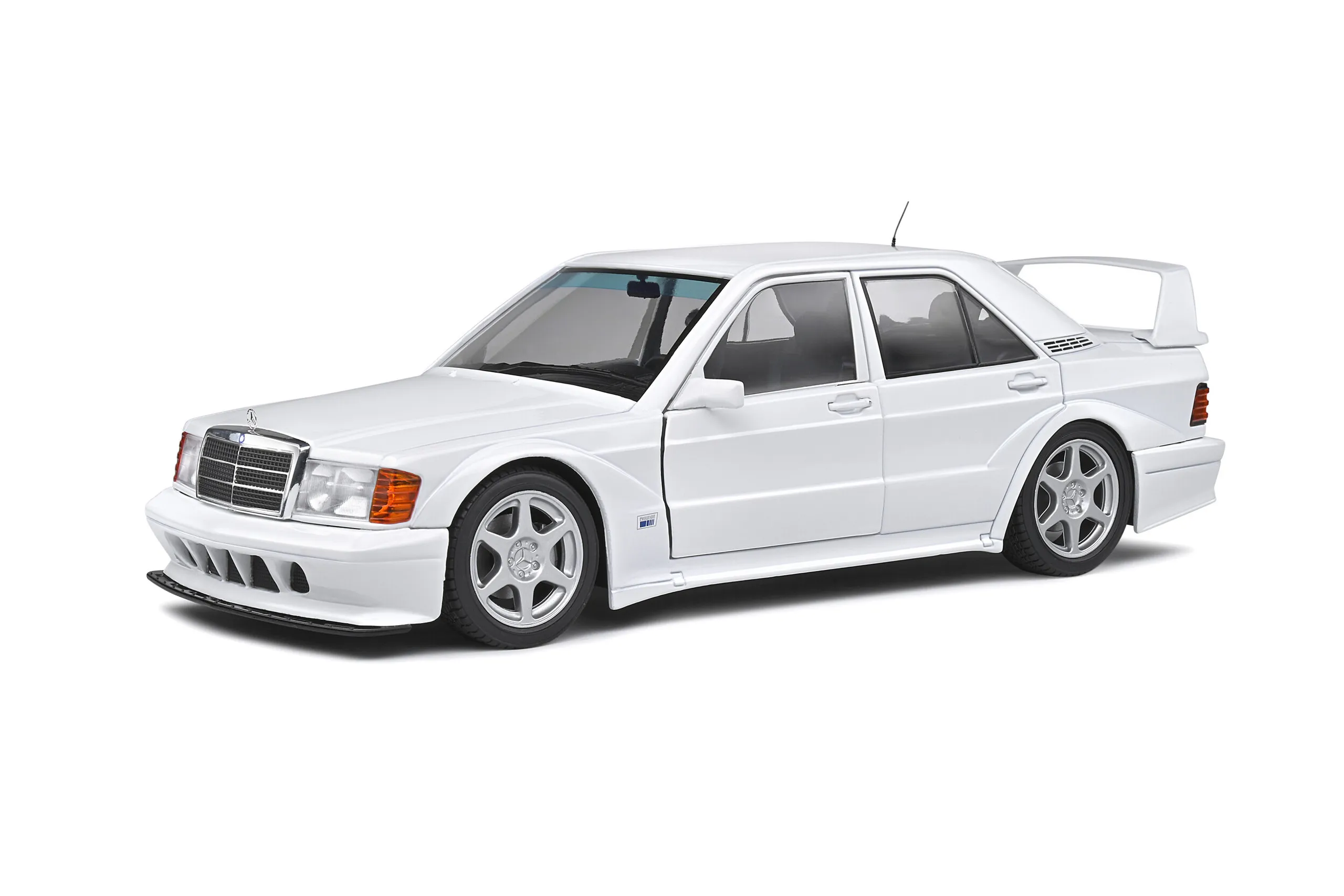Top 7 Collectible Facts About the Mercedes 190E Diecast Model
The Mercedes-Benz 190E diecast model is more than just a miniature car; it’s a gateway to automotive history, a collector’s item, and a testament to the enduring legacy of a beloved vehicle. These meticulously crafted models capture the essence of the original 190E, a car celebrated for its reliability, performance, and timeless design. Whether you’re a seasoned collector or a newcomer to the world of diecast cars, understanding the unique aspects of the Mercedes 190E diecast model can significantly enhance your appreciation and investment potential. This article delves into seven fascinating facts that make the Mercedes 190E diecast model a must-have for any collector, exploring its history, features, and the vibrant community surrounding these miniature masterpieces.
The Mercedes 190E’s Legacy
The Mercedes-Benz 190E, produced from 1982 to 1993, holds a special place in automotive history. Its introduction marked a significant shift for Mercedes-Benz, offering a more compact and accessible luxury sedan without compromising on the brand’s reputation for quality and engineering excellence. The 190E quickly gained popularity, becoming a favorite among drivers for its comfortable ride, robust build, and elegant design. This popularity has translated to the diecast world, where models of the 190E are highly sought after by collectors who appreciate its historical significance and the nostalgia it evokes. The diecast models allow enthusiasts to own a piece of this legacy.
The 190E’s Historical Significance
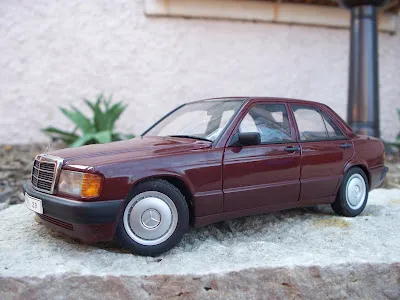
The 190E was pivotal in Mercedes-Benz’s expansion into a more diverse market segment. It represented a move towards a smaller, more fuel-efficient, yet still luxurious vehicle, appealing to a broader range of consumers. The car’s introduction helped solidify Mercedes-Benz’s position as a leader in automotive innovation and quality. The diecast models serve as miniature time capsules, preserving the design and technological advancements of the era. Collectors often seek models that represent specific years or trim levels, such as the 190E 2.3-16, to commemorate the car’s various iterations and achievements.
The 190E in Motorsport
The Mercedes-Benz 190E found considerable success in motorsport, particularly in touring car racing. The 190E 2.3-16 and 2.5-16 models were heavily modified and raced in various series, including the Deutsche Tourenwagen Meisterschaft (DTM). These race-prepared versions were instantly recognizable with their aggressive body kits and powerful engines. Diecast models of these racing versions are highly prized by collectors, representing a blend of automotive history and competitive spirit. They remind enthusiasts of the 190E’s prowess on the track and its enduring impact on the world of motorsports.
Variety of Scales
Diecast models come in various scales, each offering a different level of detail and size. The most popular scales for the Mercedes 190E include 1:18, 1:24, and 1:43. Each scale provides a unique collecting experience, with larger scales allowing for more intricate detailing and smaller scales offering affordability and space-saving convenience. The choice of scale often depends on individual preferences, available display space, and the level of detail desired by the collector. Understanding the different scales is essential for making informed purchasing decisions and building a cohesive collection.
Common Diecast Model Scales
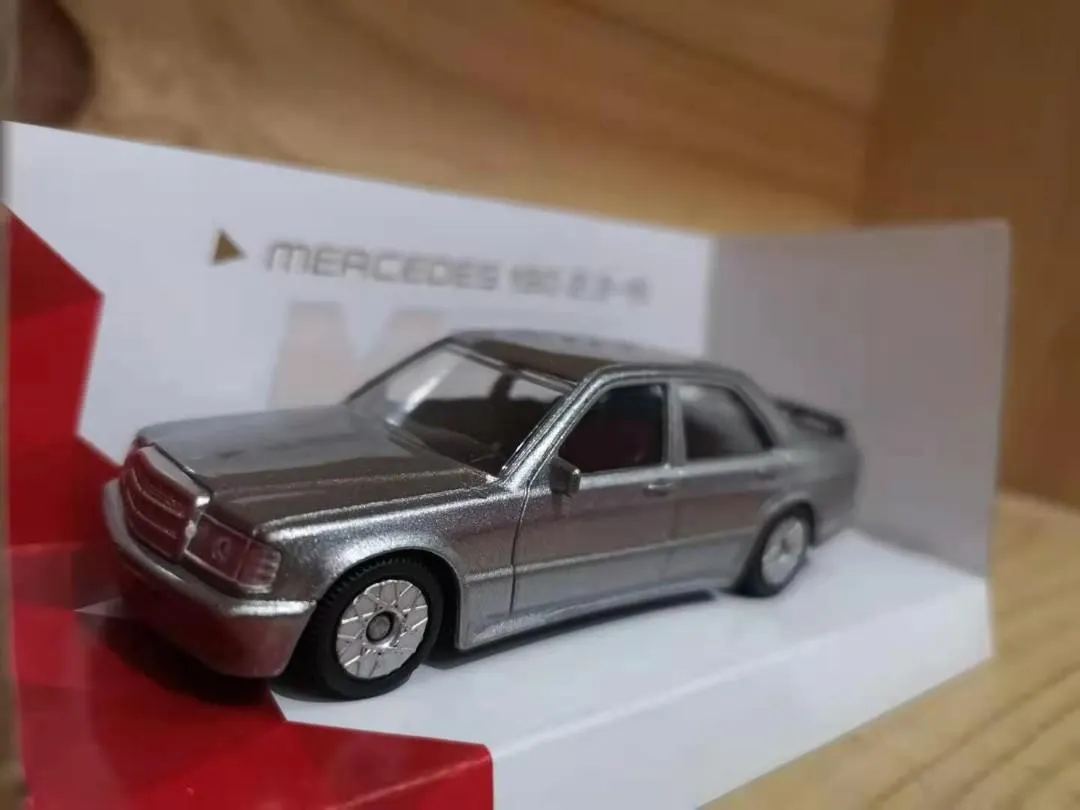
The most prevalent scales are 1:18, 1:24, and 1:43. 1:18 scale models are larger, allowing for more detailed interiors, opening features, and accurate representations of the car’s design. 1:24 scale models offer a balance between detail and size, making them a popular choice for many collectors. 1:43 scale models are smaller, more affordable, and easier to display in large numbers. Each scale caters to different collector preferences and budgets. Other less common scales exist, but these three represent the core of most Mercedes 190E diecast model collections.
Why Scale Matters
Scale affects the level of detail, the size of the model, and the overall cost. Larger scales, such as 1:18, typically offer more intricate details, such as fully functional doors, hoods, and detailed engine compartments. They also allow for more accurate representations of interior features. Smaller scales, like 1:43, are more compact and often more affordable, making them suitable for collectors with limited space or budget constraints. The scale choice dictates not only the physical dimensions but also the potential for detail and the model’s overall impact on the collection’s aesthetic.
Materials Used in Diecast Models
Diecast models are primarily made from metal alloys, often zinc alloys, and plastic components. The metal alloy forms the body of the car, providing weight and a realistic feel. Plastic is used for interior details, such as seats, dashboards, and smaller exterior components. The combination of materials allows for a balance between durability, detail, and cost-effectiveness. The quality of the materials used greatly impacts the model’s longevity and the overall level of realism achieved by the manufacturer. Premium models often use higher-quality materials to enhance the collector’s experience.
Zinc Alloy
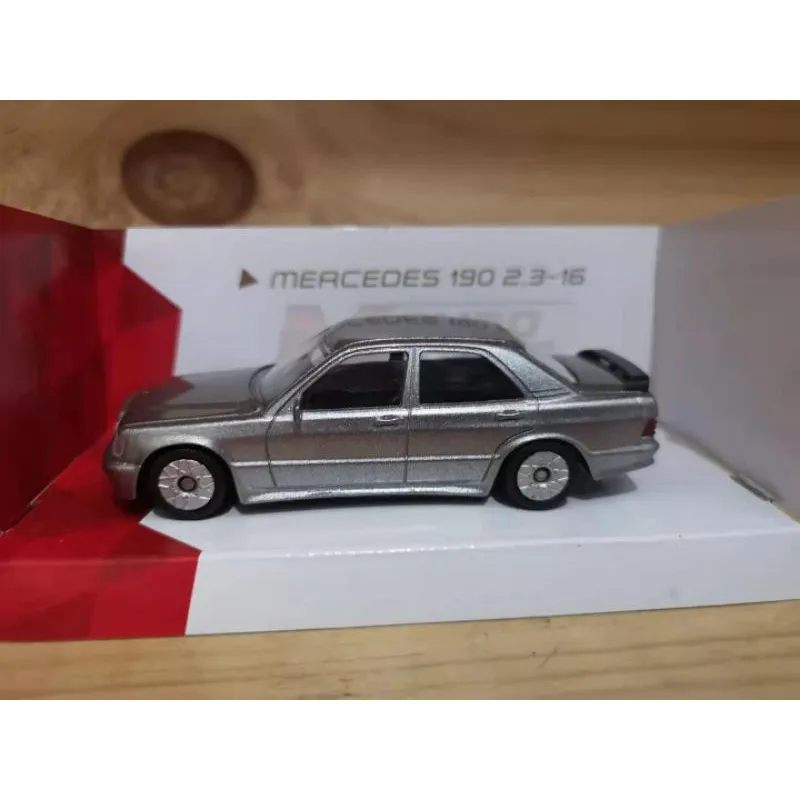
Zinc alloy, often referred to as diecast metal, is the primary material used for the body of most diecast models. It offers a good balance of strength, durability, and the ability to capture fine details. The molten alloy is injected into molds under high pressure, allowing for intricate shapes and features to be created. Zinc alloy provides the model with its weight, contributing to a more realistic feel. The quality of the zinc alloy and the manufacturing process directly impact the model’s overall finish and the longevity of the paint and other detailing.
Plastic Components
Plastic components are used extensively in diecast models for various parts, including interior detailing, wheels, tires, and smaller exterior features. Plastic offers flexibility in design and cost-effectiveness. The use of plastic allows manufacturers to create intricate interior details, such as dashboards, seats, and steering wheels. Plastic is also used for components that require flexibility, like tires, and for small parts that need to be precisely molded. The quality of the plastic used and the accuracy of its detailing are crucial in achieving a realistic and high-quality model.
Realistic Details and Features
Diecast models aim to replicate the original cars as accurately as possible. This includes features like opening doors, hoods, and trunks, as well as detailed engine compartments and interior designs. High-quality models often include realistic paint finishes, accurate badging, and even functional steering mechanisms. These features enhance the model’s collectibility and allow enthusiasts to appreciate the intricate engineering and design of the original Mercedes 190E. The attention to detail is a key factor in determining the value and appeal of a diecast model.
Opening Doors and Hoods
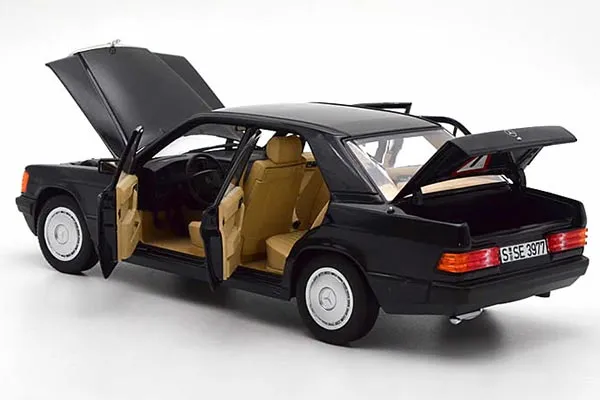
One of the most appealing features of many diecast models is the ability to open doors, hoods, and trunks. This allows collectors to examine the interior, engine compartment, and other details that contribute to the model’s realism. The hinges and mechanisms used for these features are often carefully engineered to replicate the functionality of the original car. Opening features add to the interactive experience and allow for a more intimate appreciation of the model’s craftsmanship. The smoother and more precise the movement of these parts, the higher the perceived quality of the model.
Detailed Interiors
Detailed interiors are a hallmark of high-quality diecast models. These interiors replicate the seats, dashboards, steering wheels, and other features of the original car with remarkable accuracy. The materials used can range from plastic and fabric to accurately textured surfaces that mimic the look and feel of the original car’s interior. Some models even include detailed gauges, pedals, and gear shifters. The interior detailing contributes significantly to the overall realism and collectibility of the model, allowing enthusiasts to experience the luxury and design of the Mercedes 190E.
Limited Edition and Rarity
Limited edition models are produced in smaller quantities, making them more valuable and sought after by collectors. These models often feature unique paint schemes, special details, or commemorative markings. The rarity of a model is a significant factor in determining its value and collectibility. Collectors often seek out limited editions as a way to enhance their collections and invest in models that are likely to appreciate in value over time. Understanding how to identify limited editions is crucial for any serious collector.
Identifying Limited Editions
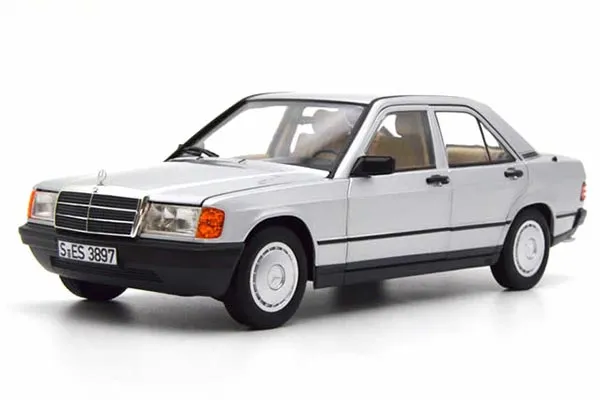
Limited edition models are typically identified through specific markings, such as a serial number, a limited edition certificate, or unique packaging. The manufacturer will often specify the production run, stating how many models were produced. Collectors should pay close attention to these details when assessing the authenticity and value of a model. Researching the manufacturer’s history and reputation, as well as any specific details about the production run, is essential for confirming the limited edition status of a model.
Impact on Value
Limited edition models tend to appreciate in value more quickly than standard models. The lower production numbers and the unique features make them highly desirable among collectors. The value of a limited edition model can fluctuate based on factors such as condition, market demand, and the reputation of the manufacturer. Investing in limited edition models can be a rewarding experience for collectors who are interested in both the aesthetic appeal and the financial potential of their collections. Careful research and understanding of market trends are key to maximizing the investment value of these models.
Popular Manufacturers
Several manufacturers are known for producing high-quality Mercedes 190E diecast models. Minichamps and Revell are among the most popular, both offering a wide range of scales and detail levels. The reputation and quality of these manufacturers influence the collectibility and value of their models. Collectors often prioritize models from reputable brands known for their attention to detail and accuracy. Choosing models from well-known manufacturers can increase the chances of acquiring a high-quality, investment-worthy model.
Minichamps
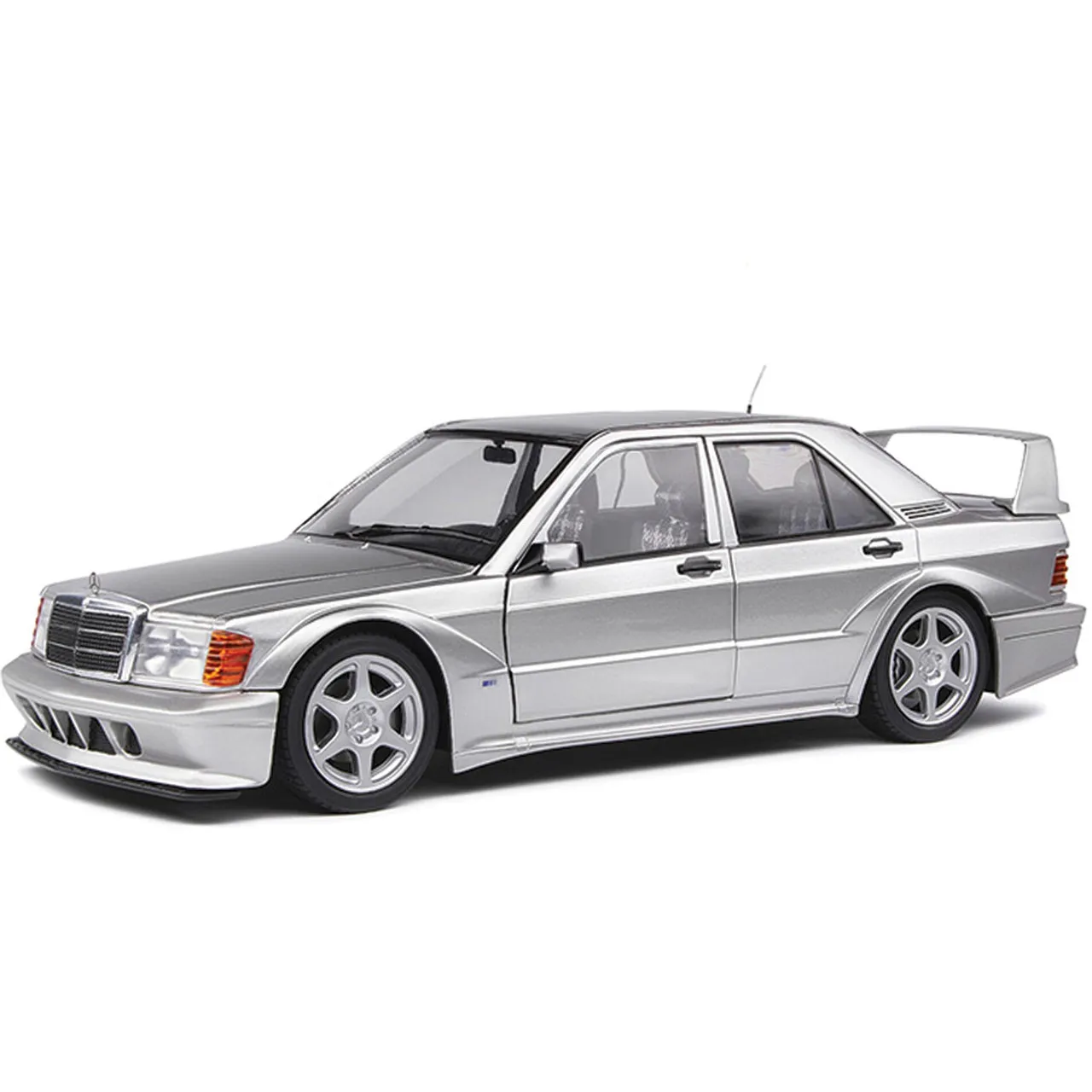
Minichamps is a well-regarded manufacturer known for its highly detailed and accurate diecast models. Their Mercedes 190E models are particularly popular among collectors, often featuring intricate details and realistic finishes. The Minichamps brand is synonymous with quality and attention to detail. Their models often command a premium price due to their high level of craftsmanship and accuracy. Collectors often seek out specific Minichamps releases, especially those representing rare or historical versions of the 190E.
Revell
Revell is another popular manufacturer offering a range of Mercedes 190E diecast models. They are known for providing a good balance of detail and affordability. Revell models are often considered a great value for collectors. Their models are a great starting point for those new to collecting and they offer a good selection of variations. While the detailing may not always match the highest standards, Revell models remain a reliable and accessible choice for many enthusiasts, contributing to the breadth and diversity of 190E diecast collections.
Investing in Mercedes 190E Diecast Models
Collecting Mercedes 190E diecast models can be an enjoyable hobby and a potentially rewarding investment. As with any collectible, the value of these models can fluctuate based on various factors. Understanding these factors is essential for making informed decisions and building a collection that appreciates in value over time. Collectors should research the market, compare prices, and assess the condition and rarity of each model before making a purchase. Careful planning and a keen eye for detail can significantly increase the chances of successful collecting and investment.
Factors Influencing Value
Several factors influence the value of Mercedes 190E diecast models. These include the rarity of the model (e.g., limited editions), the manufacturer’s reputation, the condition of the model and its packaging, and the overall market demand. Models in mint condition with original packaging typically command a higher price. Special versions, such as those representing motorsport achievements or historical events, are often more valuable. Collectors should research the market to understand current trends and assess the value of specific models based on these factors.
Preservation Tips
Proper preservation is crucial for maintaining the value and condition of Mercedes 190E diecast models. Storing models in a cool, dry environment, away from direct sunlight, helps prevent damage to the paint and materials. Keeping the models in their original packaging can also protect them from dust and physical damage. Regular cleaning with a soft cloth and avoiding harsh chemicals can help maintain the model’s appearance. Careful handling and storage practices are essential for preserving the condition and value of these collectible items.
Where to Buy and Sell
Mercedes 190E diecast models can be bought and sold through various channels, including online marketplaces, specialty shops, and collector’s events. Each channel offers unique advantages and considerations. Understanding the options available is crucial for finding the best deals, discovering rare models, and selling your collection. Collectors should explore a variety of options to maximize their collecting experience and investment potential.
Online Marketplaces
Online marketplaces like eBay are popular for buying and selling diecast models. These platforms offer a wide selection of models from various sellers, often at competitive prices. However, it is essential to carefully review seller ratings, inspect the model’s condition, and understand the shipping and return policies. Online marketplaces provide convenience and access to a global market, but it is important to exercise caution and due diligence when making purchases. Researching the seller and the model’s history can help ensure a positive buying experience.
Specialty Shops
Specialty shops and dedicated diecast model retailers offer a curated selection of models and often provide expert advice. These shops are a great resource for finding rare or limited-edition models and learning about the hobby. The staff can often offer insights into the market and the models themselves. While prices might be slightly higher than online marketplaces, specialty shops provide a more personal shopping experience and often offer guarantees of authenticity. Visiting these shops is an excellent way to immerse yourself in the world of diecast collecting and discover valuable models.
In conclusion, the Mercedes 190E diecast model is a compelling collectible, reflecting the vehicle’s rich history, engineering excellence, and motorsport achievements. From its varied scales and meticulous details to its limited editions and the manufacturers, understanding these elements enhances the collecting experience. Whether driven by nostalgia, appreciation of design, or investment potential, acquiring and preserving these miniature masterpieces offers a fulfilling journey into automotive history. By understanding the key facts outlined, collectors can build a collection that is both personally rewarding and potentially valuable, ensuring that the legacy of the Mercedes 190E continues to live on, one miniature model at a time.
